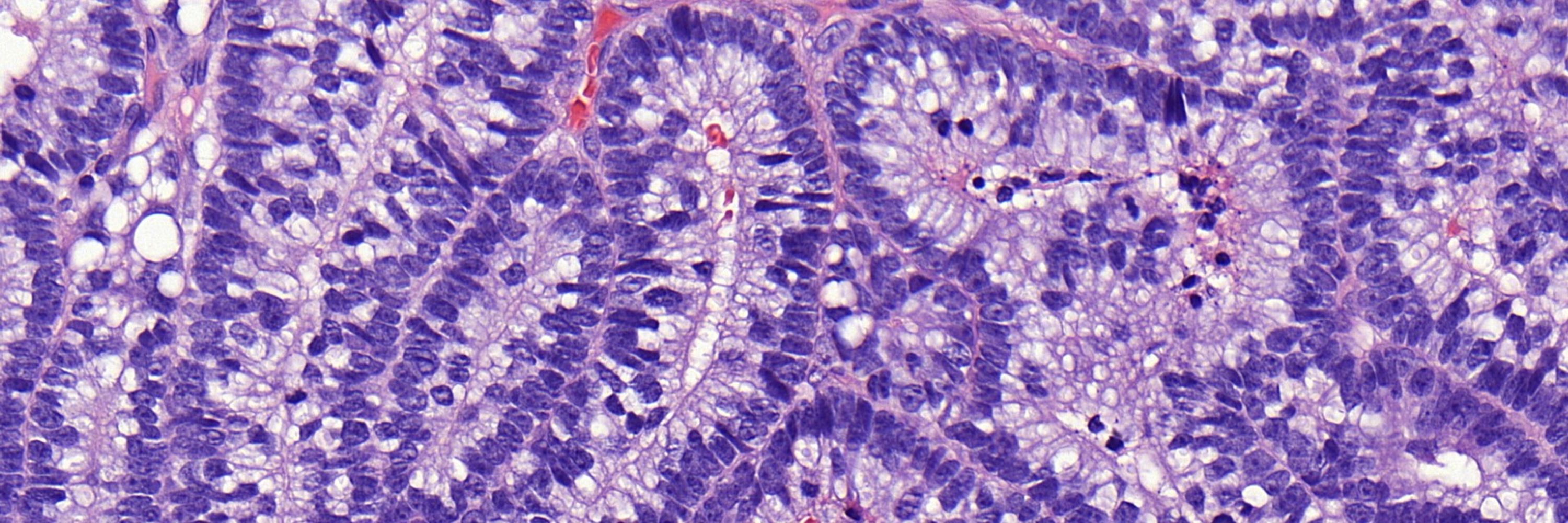
Why this matters: Recognizing these features can aid in early diagnosis, especially in patients with a family history or symptoms suggestive of HLRCC.
Why this matters: Recognizing these features can aid in early diagnosis, especially in patients with a family history or symptoms suggestive of HLRCC.
🌴 Papillary, tubular, or solid patterns (occasionally nests).
🔴 Eosinophilic nucleoli resembling inclusions.
⭕ Perinuclear halos.
Image of primary renal tumour in case below




🌴 Papillary, tubular, or solid patterns (occasionally nests).
🔴 Eosinophilic nucleoli resembling inclusions.
⭕ Perinuclear halos.
Image of primary renal tumour in case below
FH is part of the The Citric Acid cycle (TCA), crucial for ATP production.
When mutated or lost (as seen on IHC), fumarate accumulates, creating a pseudo-hypoxic state.
This triggers transcription factors that suppress apoptosis and drive proliferation.

FH is part of the The Citric Acid cycle (TCA), crucial for ATP production.
When mutated or lost (as seen on IHC), fumarate accumulates, creating a pseudo-hypoxic state.
This triggers transcription factors that suppress apoptosis and drive proliferation.
⚠️ NB: In patients with HLRCC, the uterine leiomyomas have a distinct appearance, cutaneous leiomyomas do not ⚠️ .
Sadly, 15-30% of patients with HLRCC will develop this aggressive RCC.
Cutaneous FHD leiomyoma below



⚠️ NB: In patients with HLRCC, the uterine leiomyomas have a distinct appearance, cutaneous leiomyomas do not ⚠️ .
Sadly, 15-30% of patients with HLRCC will develop this aggressive RCC.
Cutaneous FHD leiomyoma below
Associated with Hereditary Leiomyomatosis and Renal Cell Carcinoma Syndrome (HLRCC).
Leiomyomas are a hallmark:
Uterine leiomyomas: seen in nearly 100% of women with this syndrome.
Cutaneous leiomyomas: occur in ~75% of patients.
pubmed.ncbi.nlm.nih.gov/26574848/

Associated with Hereditary Leiomyomatosis and Renal Cell Carcinoma Syndrome (HLRCC).
Leiomyomas are a hallmark:
Uterine leiomyomas: seen in nearly 100% of women with this syndrome.
Cutaneous leiomyomas: occur in ~75% of patients.
pubmed.ncbi.nlm.nih.gov/26574848/
Commonly affects individuals aged ~30-40 years.
Current data suggests equal risk across genders (M = F).
2/ Other Associated Tumours/Lesions:
🔴 Steroid cell tumours, including Leydig cell tumours
🩸 Phaeochromocytomas
⭕ Adrenal nodular hyperplasia
pubmed.ncbi.nlm.nih.gov/12772087/

Commonly affects individuals aged ~30-40 years.
Current data suggests equal risk across genders (M = F).
2/ Other Associated Tumours/Lesions:
🔴 Steroid cell tumours, including Leydig cell tumours
🩸 Phaeochromocytomas
⭕ Adrenal nodular hyperplasia
pubmed.ncbi.nlm.nih.gov/12772087/

